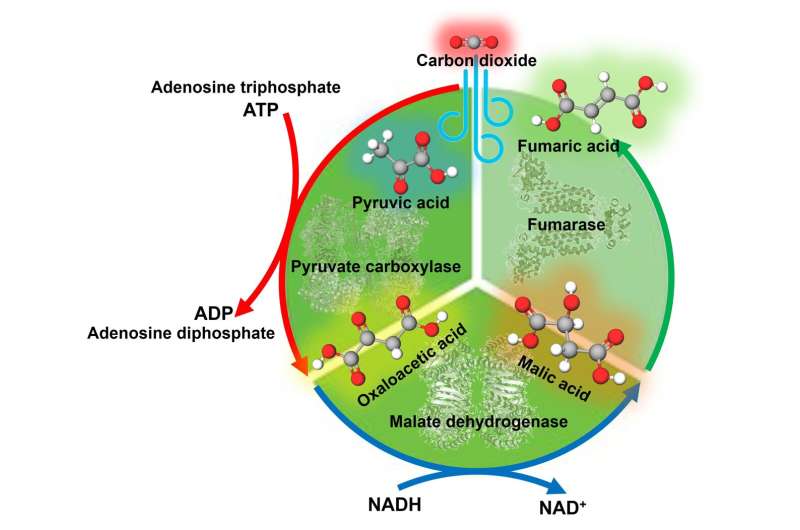
As plastic waste continues to build up faster than it can decompose, the need for biodegradable solutions is evident. Previously, Professor Yutaka Amao and his team at Osaka Metropolitan University’s Research Center for Artificial Photosynthesis succeeded in synthesizing fumaric acid, a raw material for biodegradable plastics from biomass-derived pyruvic acid and carbon dioxide.
However, the fumaric acid production process reported earlier has a problem with producing undesirable substances as byproducts, in addition to L-malic acid, which is required as an intermediate.
Continuing this research, the team devised a “more haste, less speed” strategy that supplements the two reactions performed by a single malate dehydrogenase decarboxylase with two different enzymes. The findings are published in the journal RSC Sustainability.
Based on this strategy, it is predicted that an efficient fumaric acid production system could be developed from bio-based pyruvate material and carbon dioxide.
As a result, the team succeeded in converting approximately 80% of the pyruvic acid into L-malic acid in five hours of incubation, compared to the previous result of approximately 46% conversion in seven hours. Furthermore, by adding fumarase to this reaction system, the efficiency of converting the pyruvic acid to fumaric acid was improved from the conventional 10% to about 16% in five hours of incubation.
“In the conventional fumaric acid production system, only pure carbon dioxide gas could be used, but this research has revealed the possibility of using low-concentration carbon dioxide gas emitted from thermal power plants and steel mills,” stated Professor Amao.
“In addition, we have also started to develop a system for producing fumaric acid using light energy as an application of artificial photosynthesis technology.”
More information:
Mika Takeuchi et al, A multi-biocatalytic system for effective fumarate synthesis from pyruvate and gaseous CO2, RSC Sustainability (2024). DOI: 10.1039/D3SU00486D
Provided by
Osaka Metropolitan University
Citation:
Improving fumaric acid production efficiency through a ‘more haste, less speed’ strategy (2024, October 4)
retrieved 4 October 2024
from https://phys.org/news/2024-10-fumaric-acid-production-efficiency-haste.html
This document is subject to copyright. Apart from any fair dealing for the purpose of private study or research, no
part may be reproduced without the written permission. The content is provided for information purposes only.


